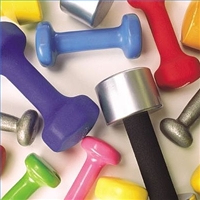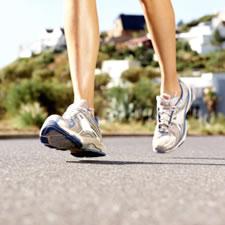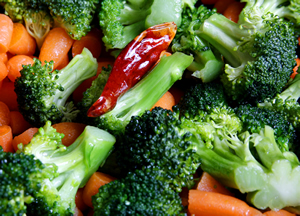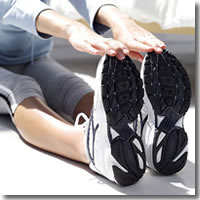Chidren And Exercise
Wednesday, 31 March 2010
 If you have a child of 6 to 8 years old that wants to start exercising and lifting weights, you may find yourself wondering what you should do. While some think it is perfectly fine for children to exercise, there are others that think differently.
If you have a child of 6 to 8 years old that wants to start exercising and lifting weights, you may find yourself wondering what you should do. While some think it is perfectly fine for children to exercise, there are others that think differently.
The long and short of it is that yes, it is beneficial for your child to partake in exercise or a weight training regimen although there are a few things that you should keep in mind once this starts to happen.
No matter how you look at it, children aren't minature adults and therefore you can't use the same methods with growing children that you can use with adults, as children are different from adults
emotionally, anatomically, and physiologically.
All children have immature skeletons, as their bones don't mature until they get 14 - 22 years of age. With girls, exercise during childhood can have very critical effects on bone health that can last for their entire lives.
Children are often times vulnerable to growth related overuse injuries such as Osgood schlatter disease. Children have immature temperature regulation systems due to their having a large surface area compared to their muscle mass which will cause them to be more susceptible to injury when they aren't properly warmed up.
Children don't sweat as much as adults do, so they will be more susceptible to heat exhaustion as well as a heat stroke. Due to their low muscle mass and immature hormone system, it makes it harder for them to develop strength and speed. Their breathing and heart response during exercise are also different from an adults, which will affect their capacity for exercise.
On the other hand, young boys and girls can drastically improve their strength with weight training although opposed to adults, neurological factors instead of muscle growth factors are mostly responsible.
When you consider programs for children, first and foremost you should obtain a medical clearance. The first approach to designing a program is to establish a repetition range of 8 - 12 and keep the work load appropriate for the range.
You should ensure that workouts are spread out enough to have at least 1 - 2 full days of rest between workouts. The main focus when working out should be on the form of every exercise performed, and not on the amount of weight being lifted.
Before weight training, warm up and stretching should be done. Start your children off with light loads and then make adjustments accordingly. No more than 3 non consecutive exercise sessions should be done in a week. You should also see to it that they drink plenty of water before, during, and after exercise. Getting enough water is very important with exercise, as it is often times very easy to get dehydrated - especially with children.

 Here are 10 tips for women to stay fit and healthy:
Here are 10 tips for women to stay fit and healthy:
 Remember when your parents used to load your plate up with veggies and not let you have any dessert until you finished every last bit? They just might have been onto something with all those dark green vegetables.
Remember when your parents used to load your plate up with veggies and not let you have any dessert until you finished every last bit? They just might have been onto something with all those dark green vegetables. If exercise is good for the body, why do so many people get injured? That's a good question. Like anything else, you have to ease into exercise and there is a basic method everyone can follow for better results. Don't forget your warm-up.
If exercise is good for the body, why do so many people get injured? That's a good question. Like anything else, you have to ease into exercise and there is a basic method everyone can follow for better results. Don't forget your warm-up.
 Even a healthy diet doesn't eliminate all cravings. The desire for a chocolate bar, a high-calorie cappuccino and other high-sugar, high-fat items doesn't disappear overnight. But cravings can be managed, and with more than just 'sheer willpower', important as that is.
Even a healthy diet doesn't eliminate all cravings. The desire for a chocolate bar, a high-calorie cappuccino and other high-sugar, high-fat items doesn't disappear overnight. But cravings can be managed, and with more than just 'sheer willpower', important as that is.